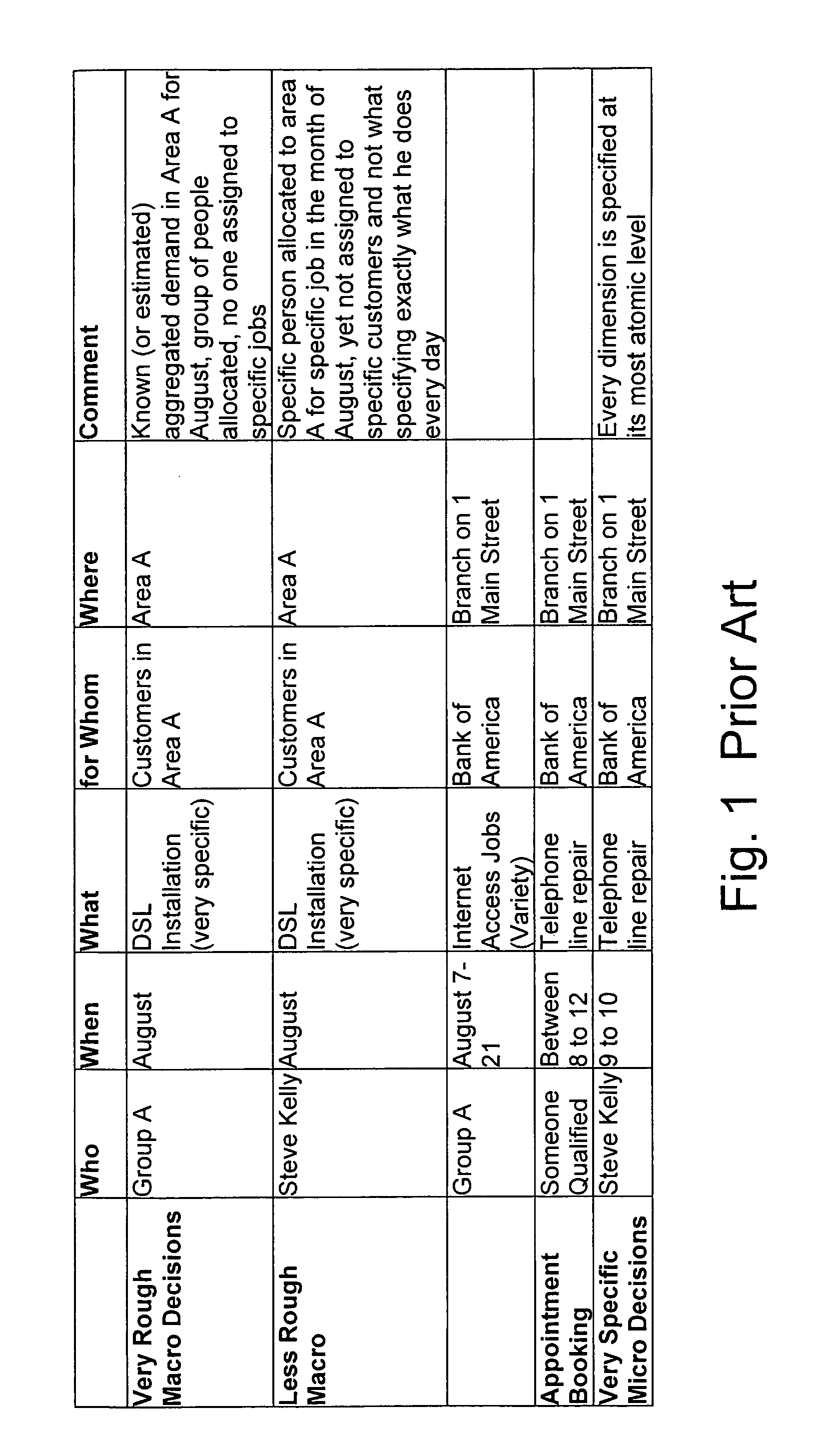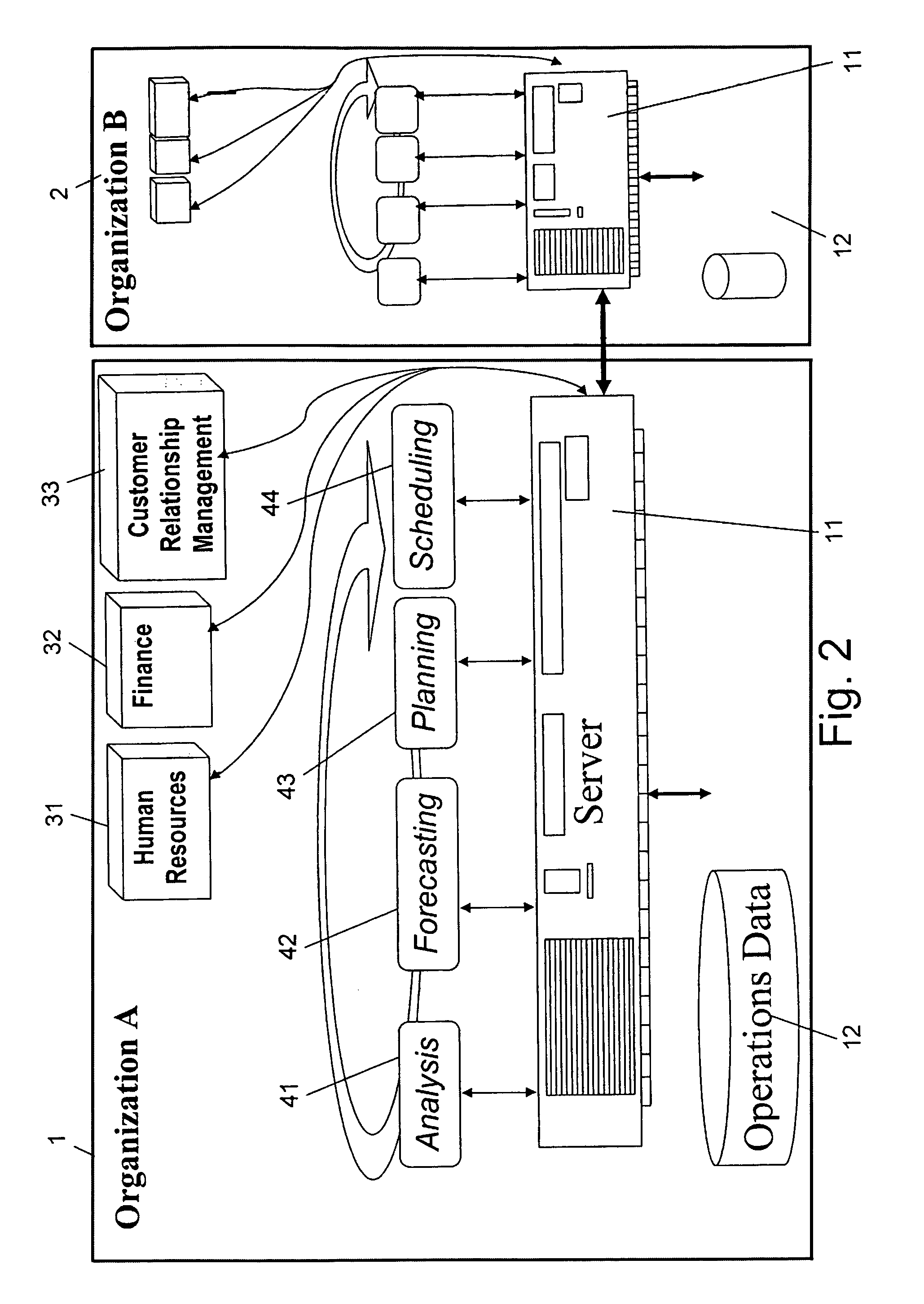Method and system for assigning human resources to provide services
a human resource and service technology, applied in the field of managing service organizations, can solve the problems of ineffective structure, inability to efficiently move back and forth across the steps, and need of excessive manpower
- Summary
- Abstract
- Description
- Claims
- Application Information
AI Technical Summary
Benefits of technology
Problems solved by technology
Method used
Image
Examples
Embodiment Construction
[0067]In order to facilitate the reading of the description to follow, a number of terms are defined below:
[0068]W-dimensions: The different types of decisions that characterize customer demand and the decision inherent in answering a customer demand, e.g., specific staff (“Who”), specific times (“When”), specific task (“What”), specific customer (“for Whom”), specific location (“Where”), spare parts or tools (“With what”). Data mining: The analysis of data for relationships that have not previously been discovered. For example, the sales records for a particular brand of tennis racket might, if sufficiently analyzed and related to other market data, reveal a seasonal correlation with the purchase by the same parties of golf equipment.
[0069]Data mining results include:[0070]Associations, or when one event can be correlated to another event;[0071]Sequences, or one event leading to another later event;[0072]Classification, or the recognition of patterns and a resulting new organizatio...
PUM
 Login to View More
Login to View More Abstract
Description
Claims
Application Information
 Login to View More
Login to View More - R&D
- Intellectual Property
- Life Sciences
- Materials
- Tech Scout
- Unparalleled Data Quality
- Higher Quality Content
- 60% Fewer Hallucinations
Browse by: Latest US Patents, China's latest patents, Technical Efficacy Thesaurus, Application Domain, Technology Topic, Popular Technical Reports.
© 2025 PatSnap. All rights reserved.Legal|Privacy policy|Modern Slavery Act Transparency Statement|Sitemap|About US| Contact US: help@patsnap.com



